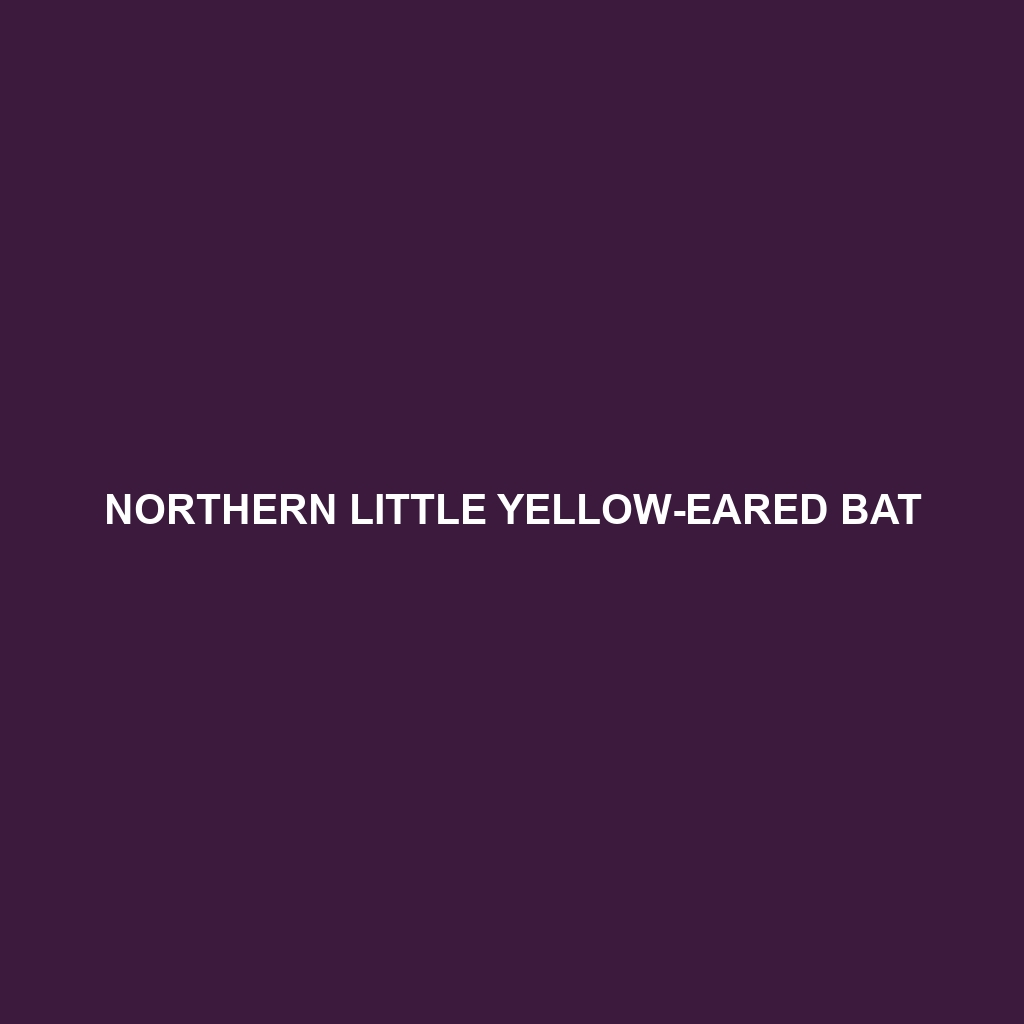Discover the fascinating world of the Nepalese Whiskered Myotis, a medium-sized bat thriving in the cool mountain habitats of Nepal and neighboring regions. With its impressive echolocation skills and crucial role in insect population control, this vulnerable species is not only a marvel of nature but also a vital part of its ecosystem. Learn about its unique behaviors, reproductive habits, and the urgent conservation efforts needed to protect this remarkable bat.
Tag: temperate forests
Strelkov’s Long-eared Bat
Discover the intriguing world of Strelkov's Long-eared Bat, a nocturnal marvel found in the temperate forests and grasslands of Eastern Europe and Asia. With their distinctive long ears, agile flight, and crucial role in controlling insect populations, these vulnerable creatures highlight the importance of conservation efforts to protect their dwindling habitats. Learn more about their unique behaviors, diet, and ecological significance in our comprehensive overview.
Little Forest Bat
Discover the fascinating world of the Little Forest Bat, a nocturnal species known for its agile flight and vital ecological role in temperate forests across Europe and Asia. With distinctive physical features and a diet primarily consisting of insects, these bats not only control pest populations but also contribute to forest health through pollination and seed dispersal. Learn more about their habitat, behavior, and conservation status in our comprehensive overview.
Far Eastern Myotis
Discover the fascinating world of the Far Eastern Myotis, a vulnerable bat species residing in diverse habitats across Eastern Asia, including China, Japan, and Korea. Known for their nocturnal foraging habits and unique adaptations, these bats play a vital role in controlling insect populations and maintaining ecological balance. Learn more about their physical characteristics, behavior, reproductive cycle, and conservation efforts in our comprehensive species description.
Lesser Large-footed Myotis
Discover the fascinating world of the Lesser Large-footed Myotis, a vulnerable bat species known for its remarkable echolocation abilities and role in insect population control. This medium-sized mammal thrives in moist, temperate forests and caves across the eastern and southern U.S., showcasing agile flight patterns and unique physical traits, such as its large feet. Learn about its habitat, diet, social behavior, and the crucial conservation efforts needed to protect this remarkable species.
Anna Tess’s Myotis
Discover the intriguing world of Anna Tess's Myotis, a vulnerable bat species thriving in the temperate forests of the western United States. With its unique physical traits, nocturnal behaviors, and significant role in pest control, this agile bat not only showcases remarkable adaptability but also plays an essential part in maintaining ecological balance. Learn more about its habitat, diet, and conservation status in our latest blog post.
Elery’s Tube-nosed Bat
Discover the intriguing world of Elery's Tube-nosed Bat (Murina eleryi), a vulnerable species native to Southeast Asia's temperate forests. With its distinctive tube-like nose and agile flight, this small bat plays a vital role in controlling insect populations and supporting biodiversity through its pollination activities. Learn about its habitat, behaviors, and the conservation efforts aimed at protecting this remarkable species from the threats of deforestation and habitat loss.
Eisentraut’s Serotine
Discover the fascinating Eisentraut's Serotine, an elusive bat species native to the temperate forests of Central and Eastern Europe. With its agile flight, distinct large ears, and preference for undisturbed habitats, this nocturnal insectivore plays a crucial role in controlling insect populations while facing threats from habitat loss. Learn more about its unique behaviors, reproduction, and conservation status in our latest blog post.
Flat-headed Myotis
Discover the fascinating world of the Flat-headed Myotis (<i>Myotis planiceps</i>), a small bat species thriving in North America's temperate forests. With its distinctive flat head and remarkable echolocation abilities, this nocturnal insectivore plays a vital role in controlling pest populations and supporting ecosystem balance. Learn about its habitat, unique behaviors, and the conservation challenges it faces in this insightful blog post.
Northern Little Yellow-eared Bat
Discover the fascinating world of the Southern Little Yellow-eared Bat, a small yet crucial species found across the southern United States and parts of Central America. With its unique yellow ear coloration and diet rich in insects, this nocturnal mammal not only helps control insect populations but also aids in pollination, underscoring its vital role in maintaining ecological balance. Learn about their habitat, behaviors, and the conservation efforts underway to protect this vulnerable species in our latest blog post.









